Croston
OS Grid ref:- SD487187
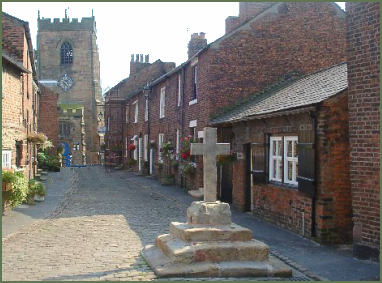 Croston, a Lancashire village of much Old World character and charm, is situated on the River Yarrow, between Chorley and Southport.
Croston, a Lancashire village of much Old World character and charm, is situated on the River Yarrow, between Chorley and Southport.
The village traces its origins back to the seventh century when St. Aidan arrived in the area. In the absence of a church, a preaching cross was erected to mark the place of worship. Croston literally means 'cross-town' and is derived from the two Saxon words 'cross' and 'tun'. The original cross is no longer survives, it is thought to have disappeared in the time of Cromwell's Protectorate.
The stone cross, at the far end of Church Street, was erected in 1953, although the base is believed to date from the seventeenth century and was built on the site of the original seventh century cross.
Church Street boasts one of the best preserved rows of seventeenth century cottages in Lancashire .At the other end of the street from the church is the building that once housed the village smithy. The single storey building is Grade II listed.
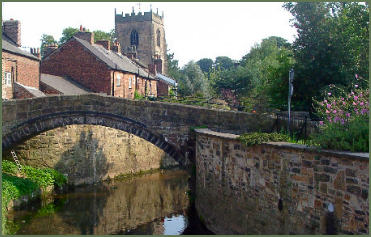 There is also a characterful cobbled pack horse bridge, crossing the River Yarrow, known as Town Bridge it dates back to 1682. The River Yarrow flows past the church and throught the village. The picturesque bridge is probably the most photographed view of the River Yarrow. The village green is surrounded by The Nelson and Wheatsheaf inns and the Fresco Fresco, a traditional Italian restaurant. The village green is the venue for the annual May Day Madness and Bastille Day celebrations. There are also tea rooms, traditional shops and antiques shops.
There is also a characterful cobbled pack horse bridge, crossing the River Yarrow, known as Town Bridge it dates back to 1682. The River Yarrow flows past the church and throught the village. The picturesque bridge is probably the most photographed view of the River Yarrow. The village green is surrounded by The Nelson and Wheatsheaf inns and the Fresco Fresco, a traditional Italian restaurant. The village green is the venue for the annual May Day Madness and Bastille Day celebrations. There are also tea rooms, traditional shops and antiques shops.
A church has occupied the site of the present church of St Michael since the seventh century, this Saxon church was replaced in the Norman era, a doorway dating to this period survives, although the church was largely rebuilt in the sixteenth century.
The chancel has an arched roof and is divided from the nave by a tall decorated oak screen surmounted by the royal arms, the arms of Farrington of Worden, Nelson of Fairhurst, the Asshetons, Pilkingtons, Heskeths and Traffords of Croston, along with old Lancashire families are also displayed in the building. Opposite the church stands the old rectory, built in 1772.
Croston Old School, situated at the centre of the village, by the church, is a Grade II listed building which dates back to 1660. The village junior school occupies the site of one founded in 1372 by John of Gaunt, Duke of Lancaster, the third son of King Edward III and virtual ruler of England during the minority of his nephew, Richard II.
St. Michael's Church and the Old Smithy and Cross
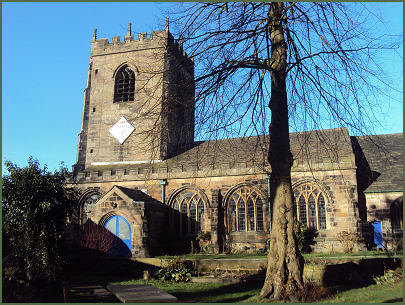
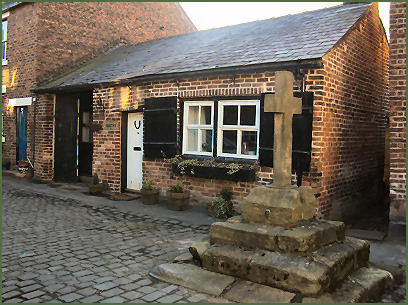
The Old Rectory, a Georgian building with autch influence is now a residential home, the rectory was built in 1722 by Rev William Pilkington. The Henry Croston Alms House, on Station Road dates to 1692, a set of houses built for the poor stand on the opposite side of the river, built by the local Masters family who were rectors of the church. These were completed in 1802 to commemorate the reign of King George III.
The Old School House
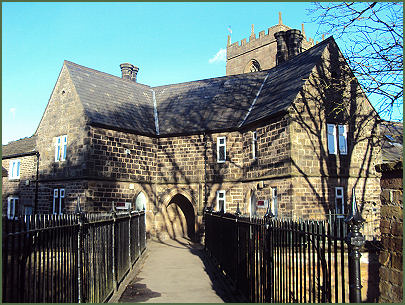
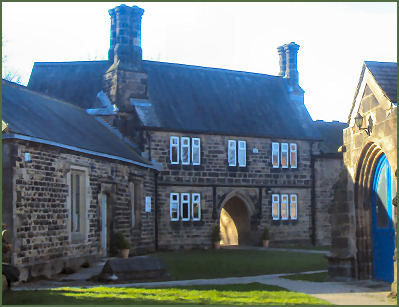
The Croston Heritage Trail takes in many of the town's unique historic buildings, the walk starts at the village green, located along Town Road. The walk is around 2 miles long and takes about an hour and a half to complete, it is marked by clog symbols from the green.
Nearby Places of Interest
Rufford Old Hall-Timber framed hall at Rufford near Ormskirk which dates back to the sixteenth century and is one of Lancashire's finest Tudor buildings.
Mere Sands Wood- situated between Holmeswood and Rufford is a wildlife-rich haven in the heart of west Lancashire.
Martin Mere -seasonally flooded wetlands attracts tens of thousands of migratory geese and wetlands birds making it one of the finest birding locations in the country.
